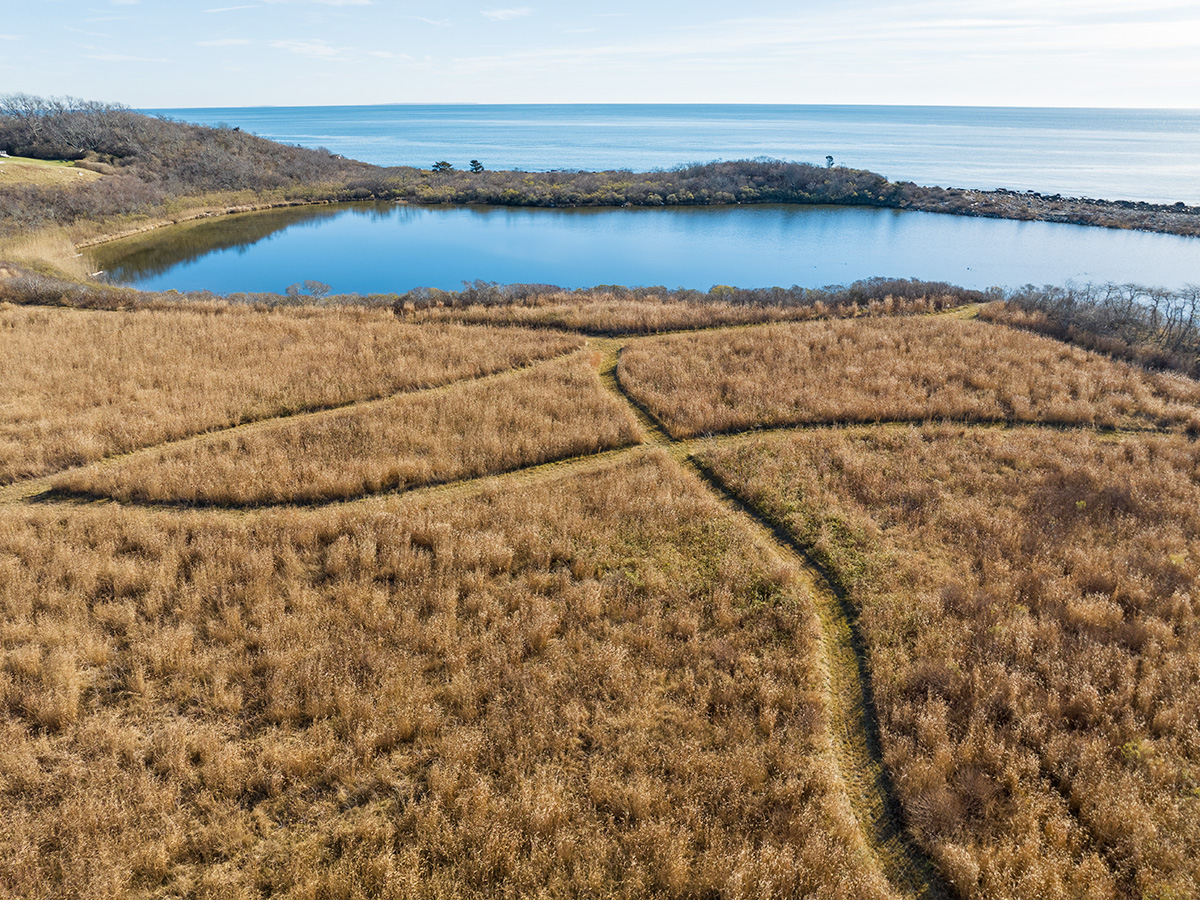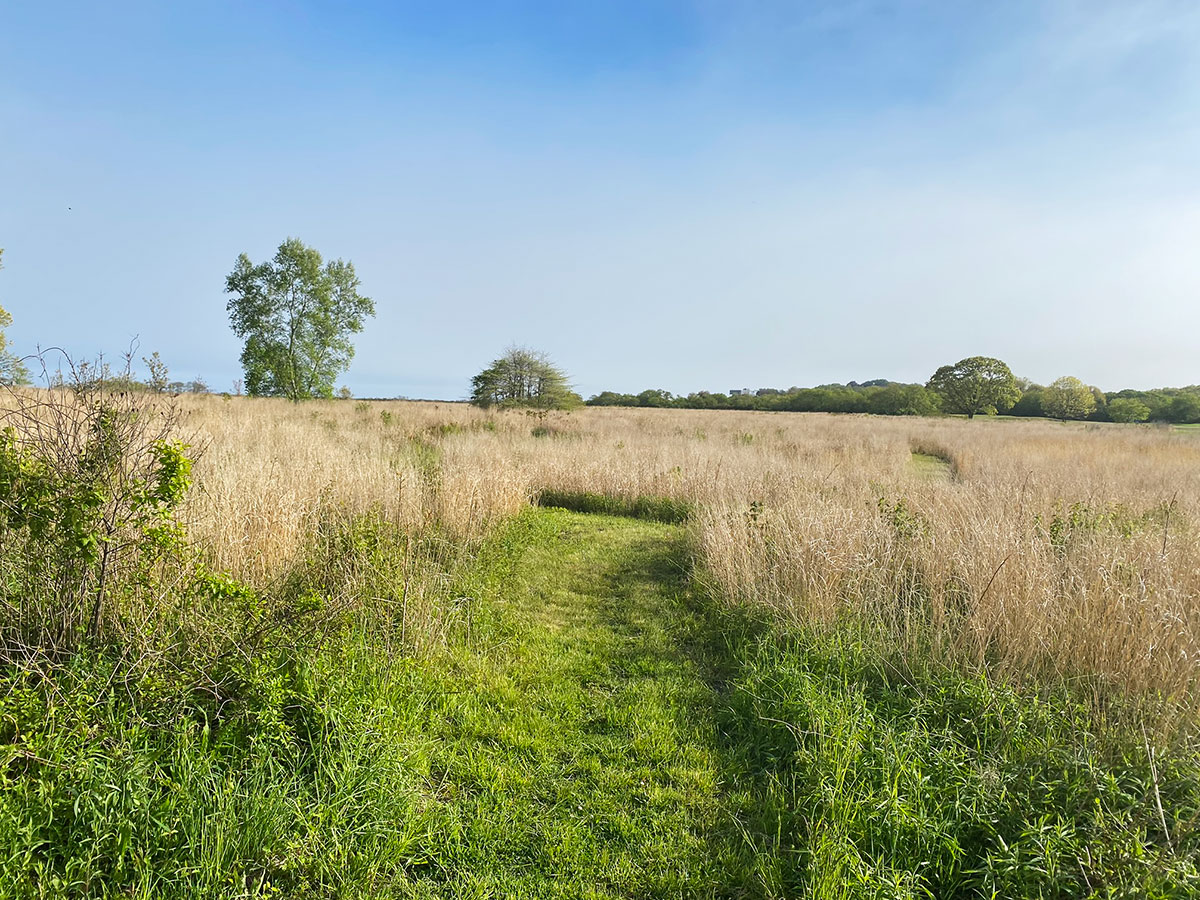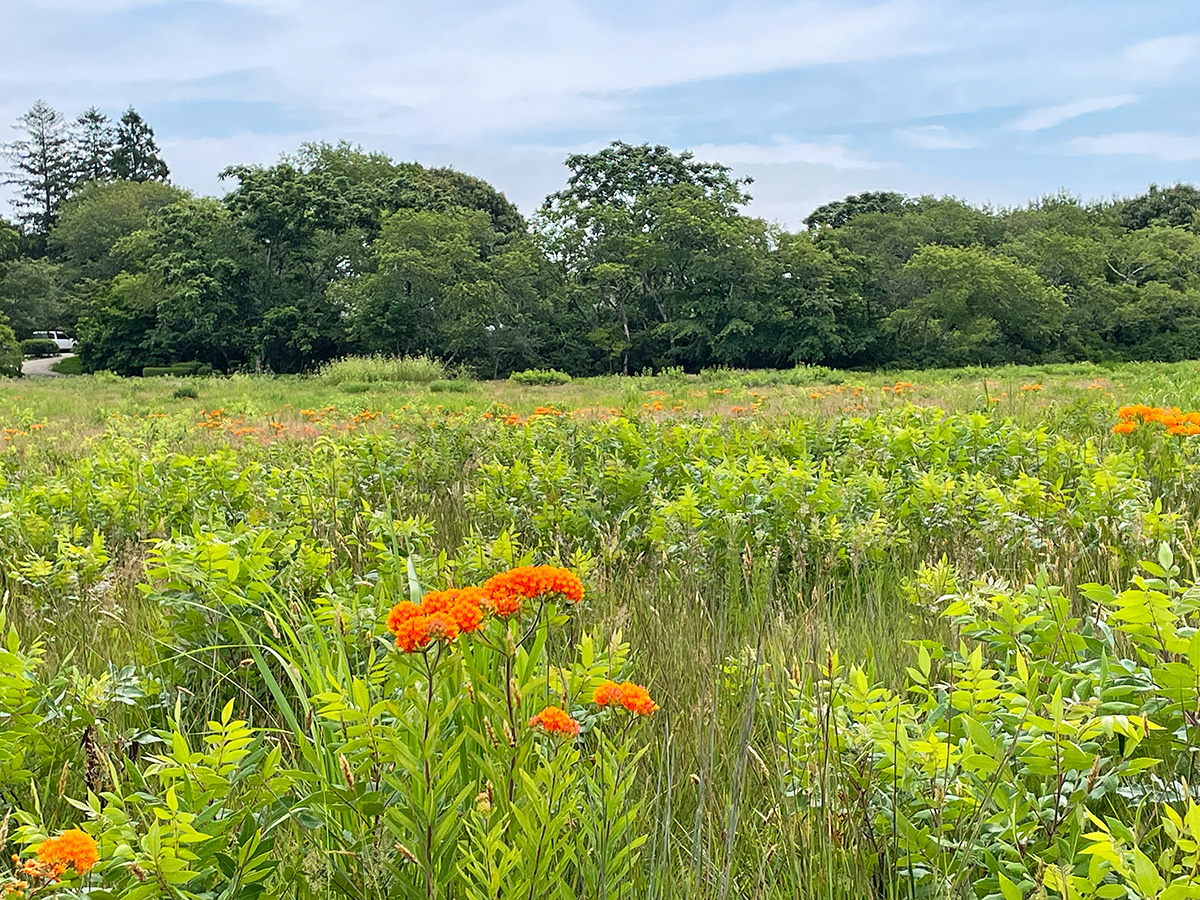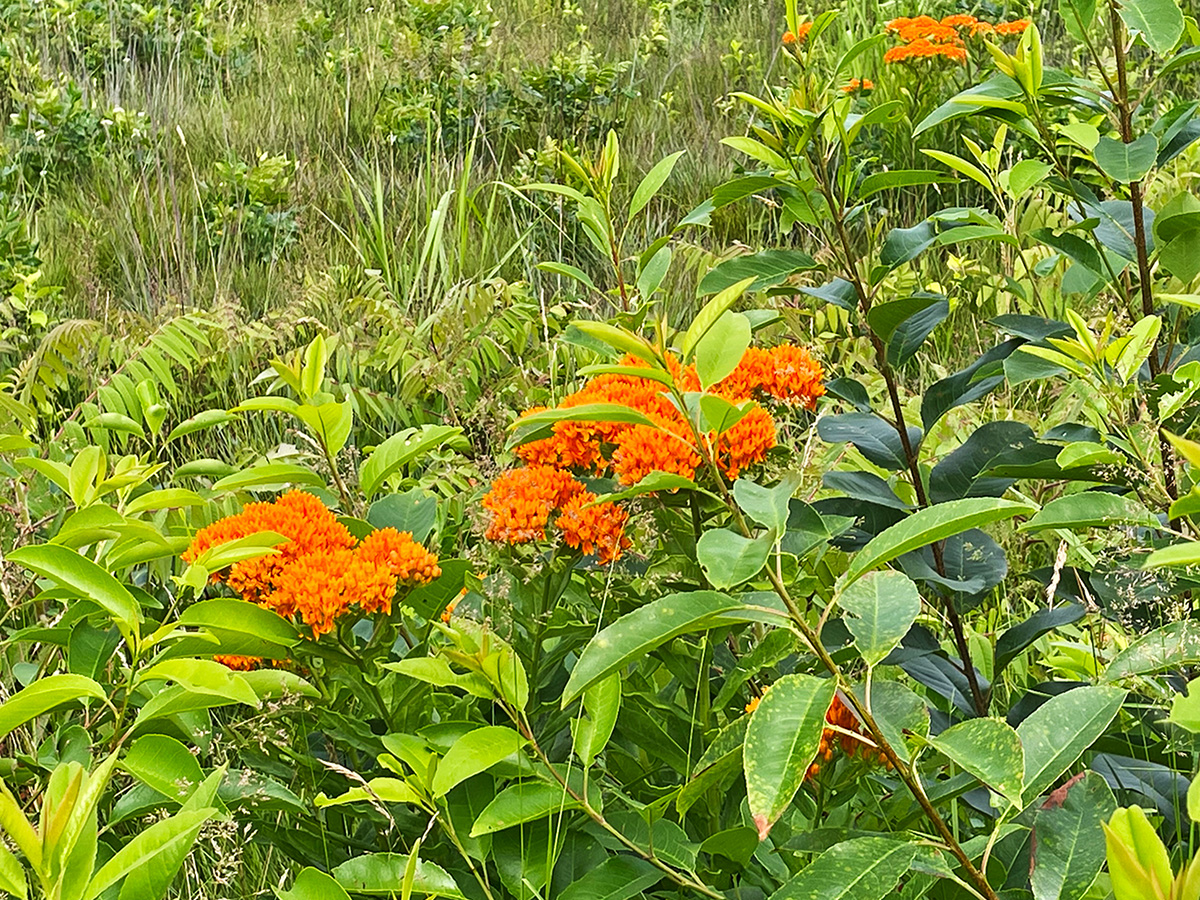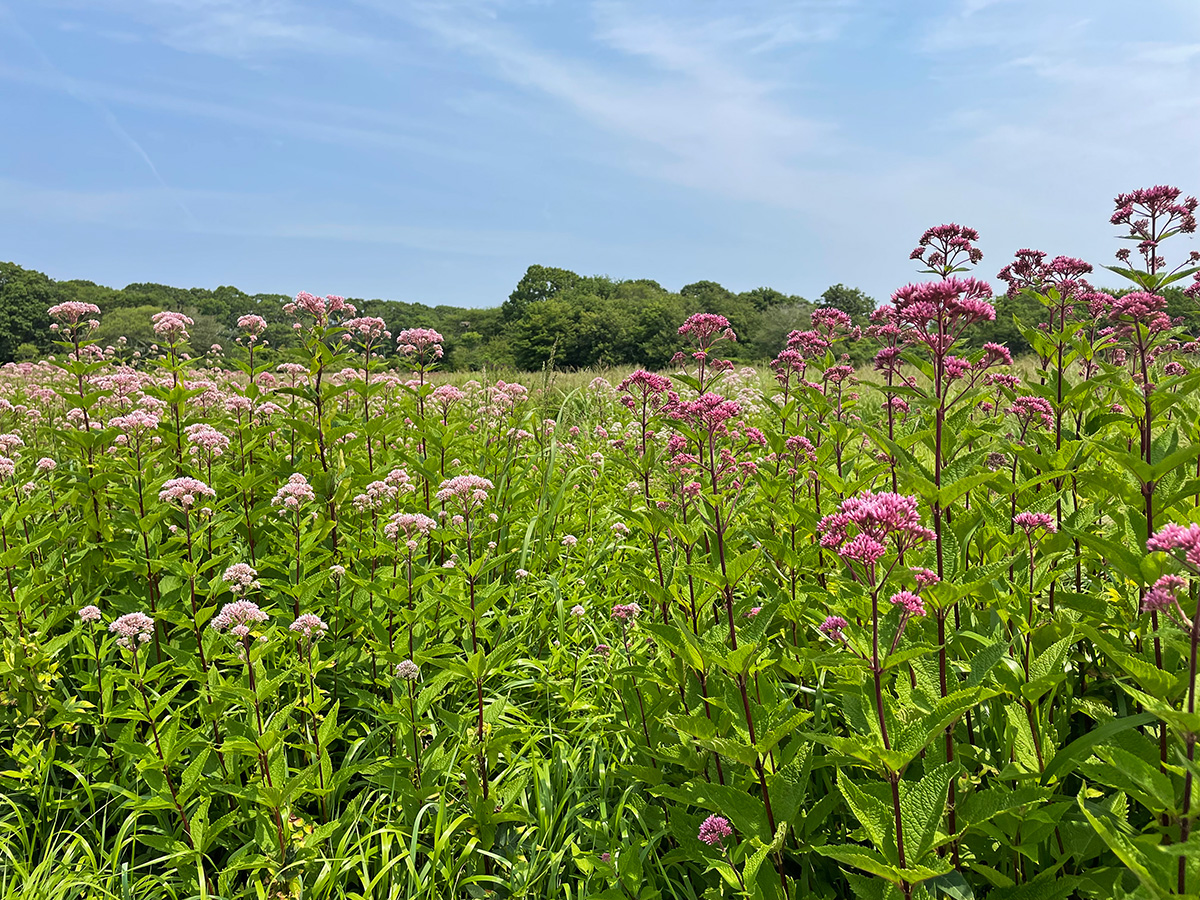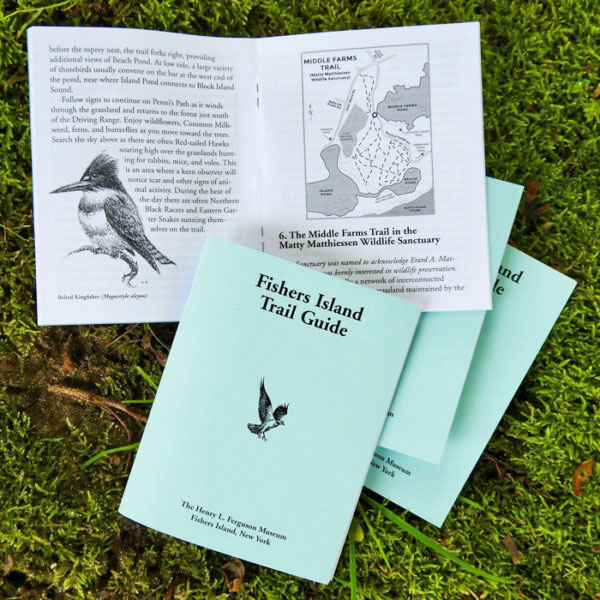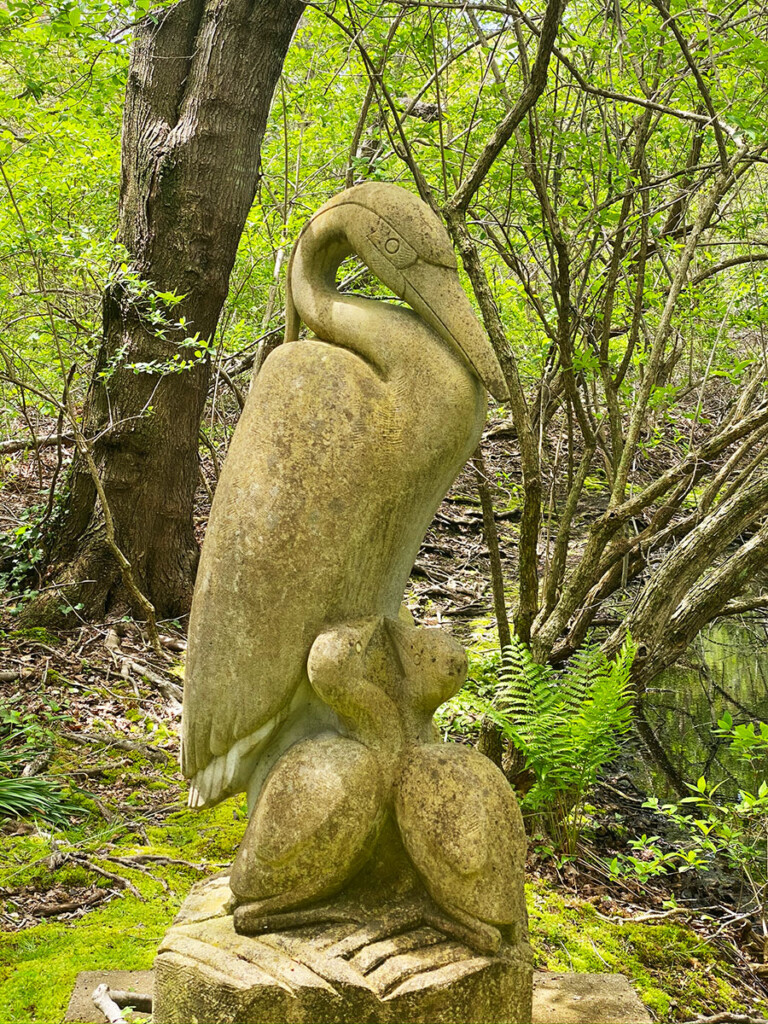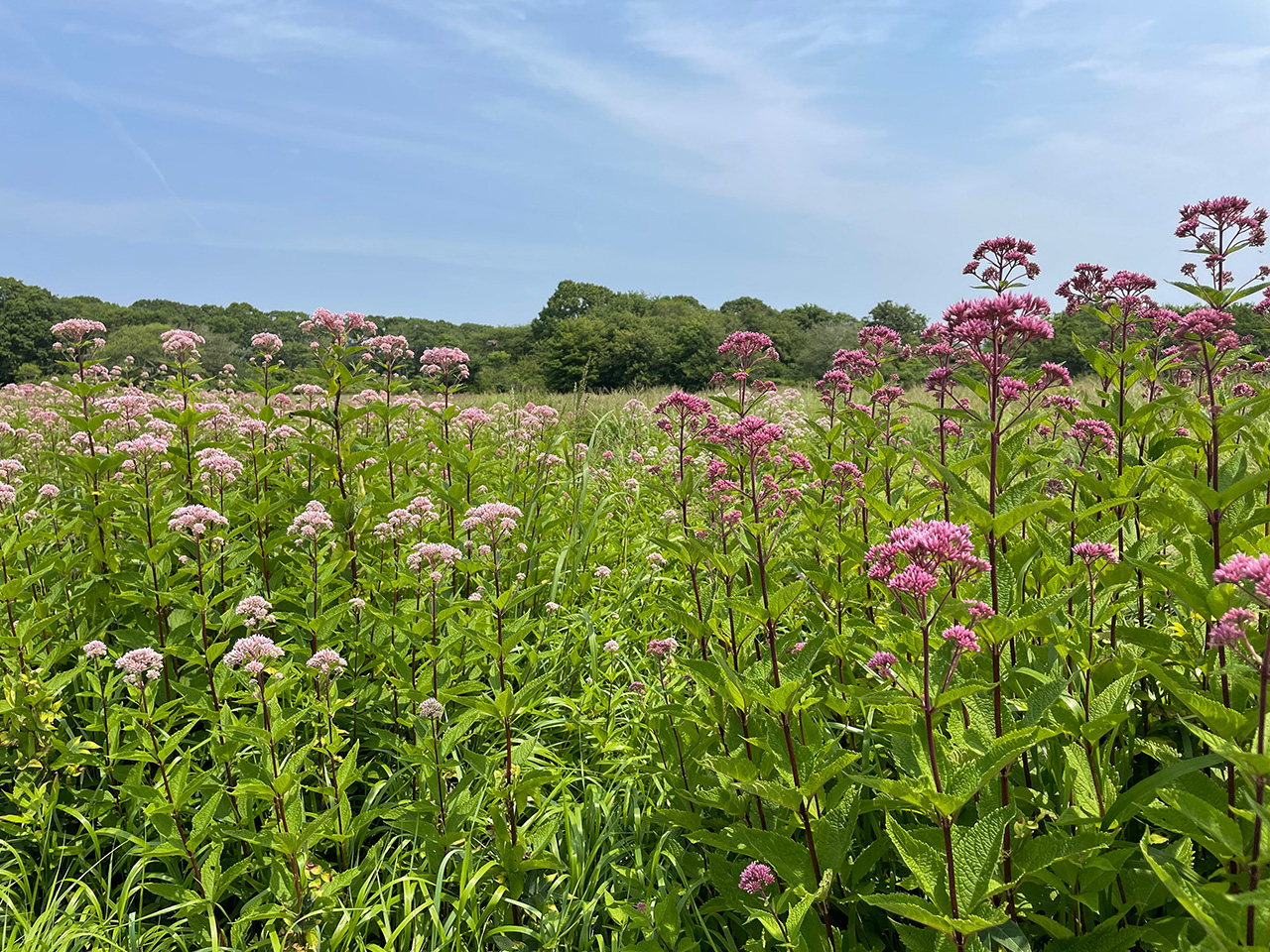
7. The Middle Farms Trail in the Matty Matthiessen Wildlife Sanctuary [Former #6]
This Sanctuary was named to acknowledge Erard A. Matthiessen, who was keenly interested in wildlife preservation.This trail is actually a network of interconnected pathways through a maritime grassland maintained by the Henry L. Ferguson Museum Land Trust. It is surrounded by successional shrubland on the east and west and marine shrubland to the south.
The parking area is located on Middle Farm Road. Heading east from town, go past the Driving Range and take your first right at the OspreyCam nest pole. Proceed 0.2 miles to a parking area on the right.
These trails are a comfortable walk through a rare marine grassland habitat created by salt spray from Block Island Sound to the south and periodic flooding from hurricanes and tropical storms. There are more than four miles of paths throughout the 45+ acre site. Trails meander and intersect often in maze-like manner when the grasses are tall. There is a mixture of maritime and old field agricultural grasses including Switchgrass, Little Bluestem, Indiangrass and Bluejoint Redgrass. Winged Sumac and Bayberry are common shrubs along the edges of the meadow. In the fall, large drifts of wild flowers blossom: Spotted Joe-Pye Weed, Common Boneset, several varieties of Goldenrods, Asters, and others, provide nectar for bees and butterflies. Throughout the seasons, these plants attract many insects and produce seeds, which together create great birding opportunities. Depending on the season and time of day, a variety of waders and shorebirds, such as the Black-bellied Plover, can be seen in and around Beach Pond. The grassland habitat is critical for raptors such as the American Kestrel and Northern Harrier, which are often observed hunting over the flats. Gray Catbirds, Cedar Waxwings, Tree Swallows, Yellow Warblers and Red-winged Blackbirds frequent the meadow’s shrubby edges and wet thickets that provide food, cover and nesting sites. Although many mammals hunt and feed in this grassland, the nature of the area makes them difficult to observe; however, their scat testifies to their presence. This Sanctuary provides many opportunities to identify wildflowers, dragonflies, and bird species on an easy hike.


